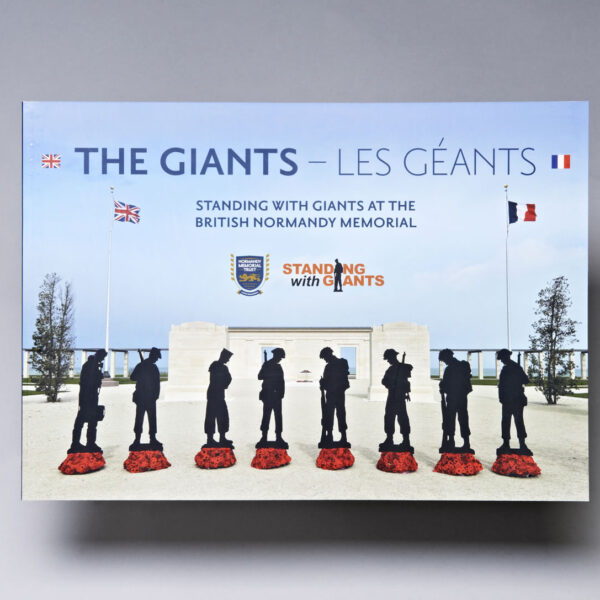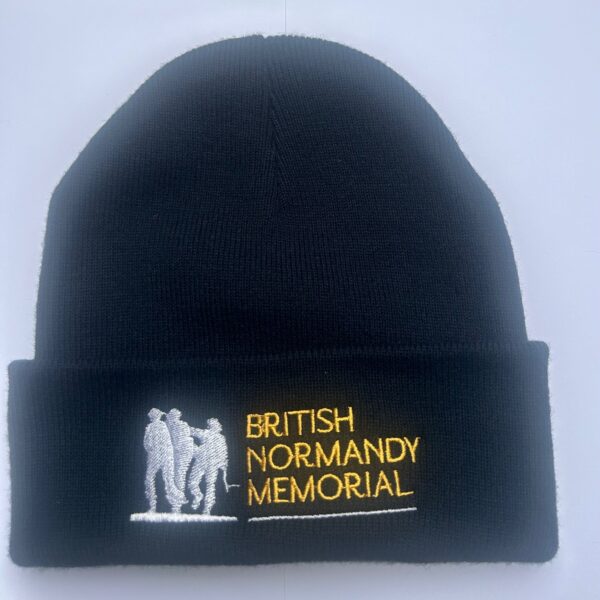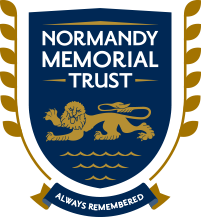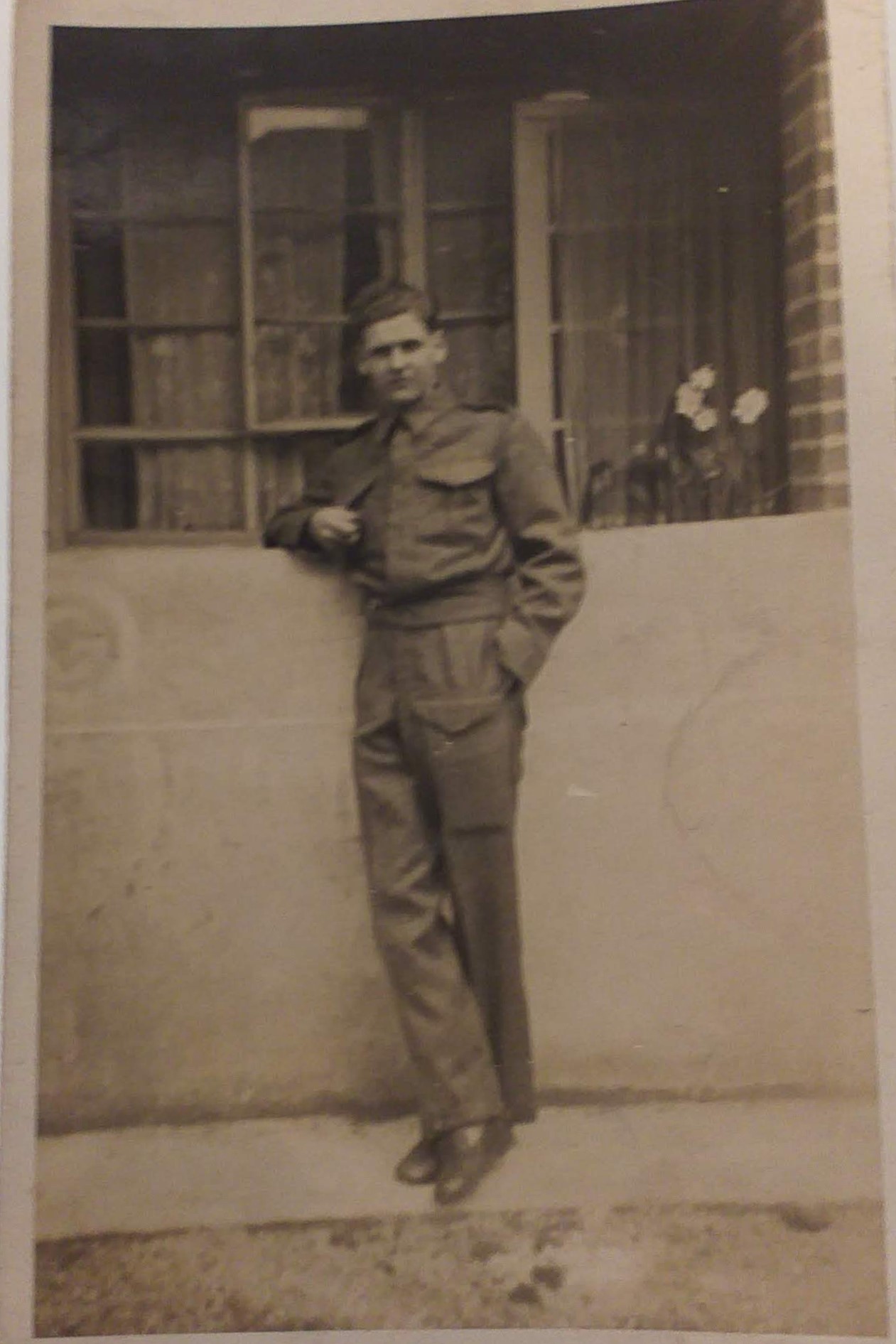
Jack Lewis
This story and photos are shared by the Trust with kind permission from Mark Lewis, Jack's nephew
Jack Lewis was born 25 April 1920 in Pontypridd, Wales, the son of William and Matilda Lewis. His service record records that his religion was Baptist, he was 5ft 7 and 3/4in tall and weighed 121lbs. He had blue eyes and brown hair.
He was posted from the Territorial Army, Civil Registration Number AJAF225/8x to the RAMC on the 28 February 1941. When he signed up for service he was living at 1 Bentinck House, W12, London.
Uncle Jack was one of a group of about 150 conscientious objectors. These men were non-combatants for their strongly held religious principles, essentially they were not prepared to kill other men. But they were fully prepared to accompany soldiers into battle in order to care for those who were wounded.
Originally, they had not been permitted to enter the Royal Army Medical Corps (RAMC) and so instead volunteered to carry out the dangerous work of bomb disposal. However, the urgent need for medics suitable for parachute duties lead to a quick revision of thought and Senior Officers from the Airborne RAMC met with the Conscientious Objectors to discuss this.
With them it was agreed they would be welcomed by the Airborne RAMC but because of their non-combatant role they would not be allowed promotion above the rank of Private Soldier. On their part the Conscientious Objectors insisted on two requirements. They would not be required to carry weapons or handle munitions. They could treat German wounded equally with their own. Both these stipulations were in keeping with RAMC practice and were readily agreed to.
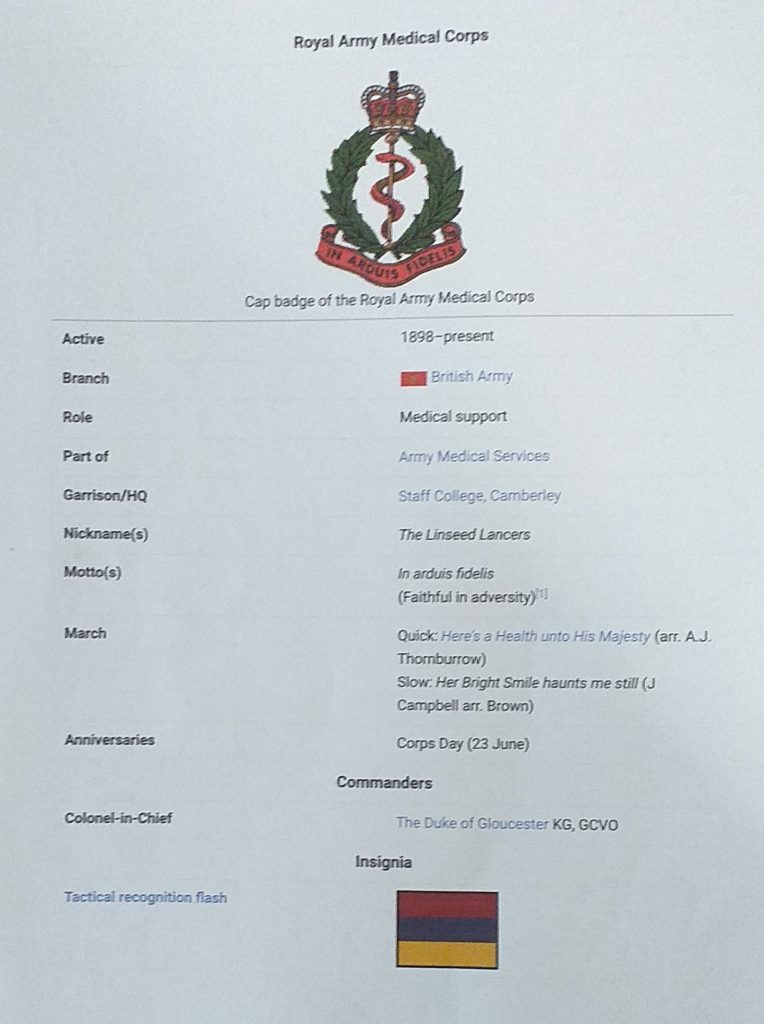
RAMC details which shows their cap badge, one which Jack was proud to wear
He was parachute trained at RAF Ringway on course 75b. This course ran from 27 July to 6 August 1943. Jack's instructor noted this about his performance: Good confident jumper.
The high standard of care given to the 6th Airborne Division casualties was in no small measure to the untiring efforts and courage of a group of Conscientious Objectors serving with the Royal Army Medical Corps. They were within the Parachute and Airborne Field Ambulances. Jack was with 224 Field Ambulance, 3rd Parachute Brigade, Section One, 1st Canadian Parachute Battalion. They took off from Down Ampney, Gloucestershire on the evening of 5th June as part of Operation Tonga, 6th Airborne Division's parachute and glider assault in the early hours of D-Day. They were dropped by two Aircraft in and around Varaville.
I have a letter from a Lieutenant R.M Marquis RAMC to our grandfather saying that he was part of his section. He said that Jack was a keen and enthusiastic member of the section and he valued him highly. He then said he had not yet reported to this unit since landing in France and that he has no definite news but it seems probable that he is now a prisoner of war in which case that the first definite news will come from him.
He goes on to say that he was in good spirits in the plane and that they had a good flight over to France. He jumped in the middle of the stick and that he got out of the plane well but unfortunately were unable to meet up on the ground and that he is in the company of friends.

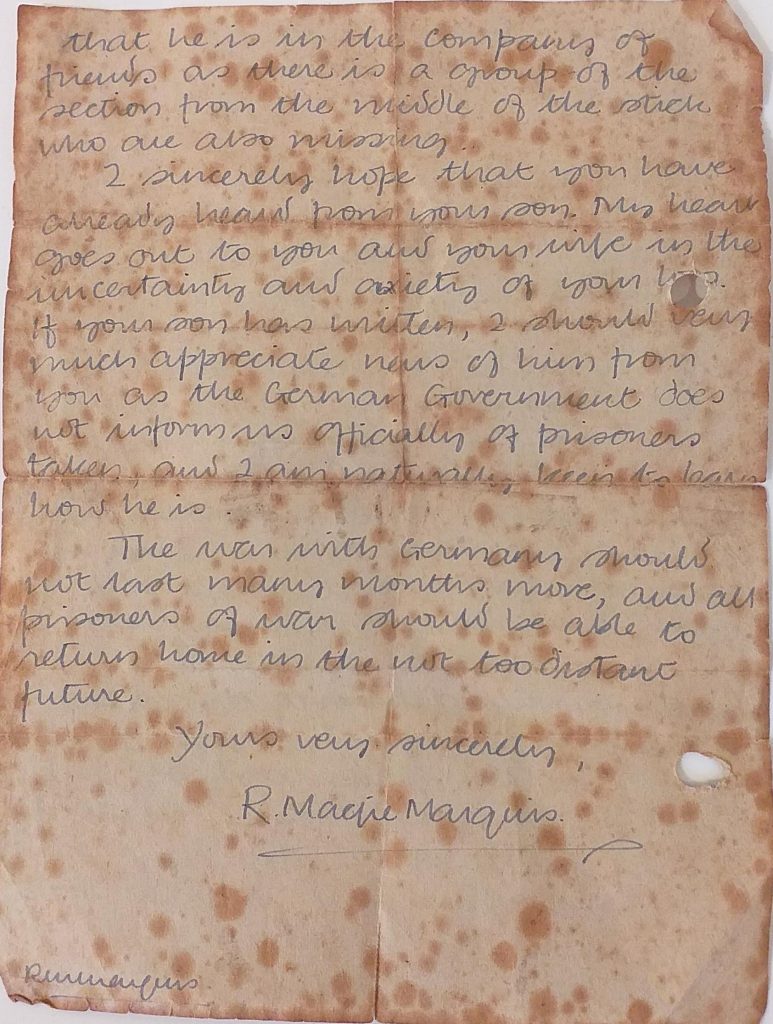
Letter sent to Jack's father by Lieutenant R.M Marquis
I have an eyewitness account which comes from a publication written in 1945 by members of the 224 Parachute Field Ambulance. Titled "Red Devils" The story of the 224 Field Ambulance in Normandy they dedicated it to those who did not return. There is no precise time of day given but a soldier named Private C. H. Pritchard records the circumstances when Jack was wounded.
He said that he was following Jack across a open stretch of ground when a shot rang out and Jack fell wounded. Private Pritchard hurried up to him to discover that he had been shot in the groin which he described as seeming serious. As he was examining it a party of Germans came up and took them prisoner and Jack was left in hands of a German medical orderly.
Jack is buried in Brucourt Churchyard, along with men who were transported to Normandy on Glider CN110 and Dakota CN254. Uncle Jack jumped from the Dakota. These men are commemorated by locals to this churchyard. Brucourt Churchyard would have been seen as a fit place of commemoration to his comrades or the local people who buried him, as it could be maintained easily and would have been potentially close to where he died. If a casualty was adequately commemorated, it was decided that they would not be disturbed unnecessarily. Ben Hill, of ParaData, believes there are over 90 grave sites of Allied soldiers buried in various churchyards in France rather than CWGC cemeteries. Jack is buried alongside John Edgar Leach, who also served in 224 Parachute Field Ambulance, and was also killed on D-Day.
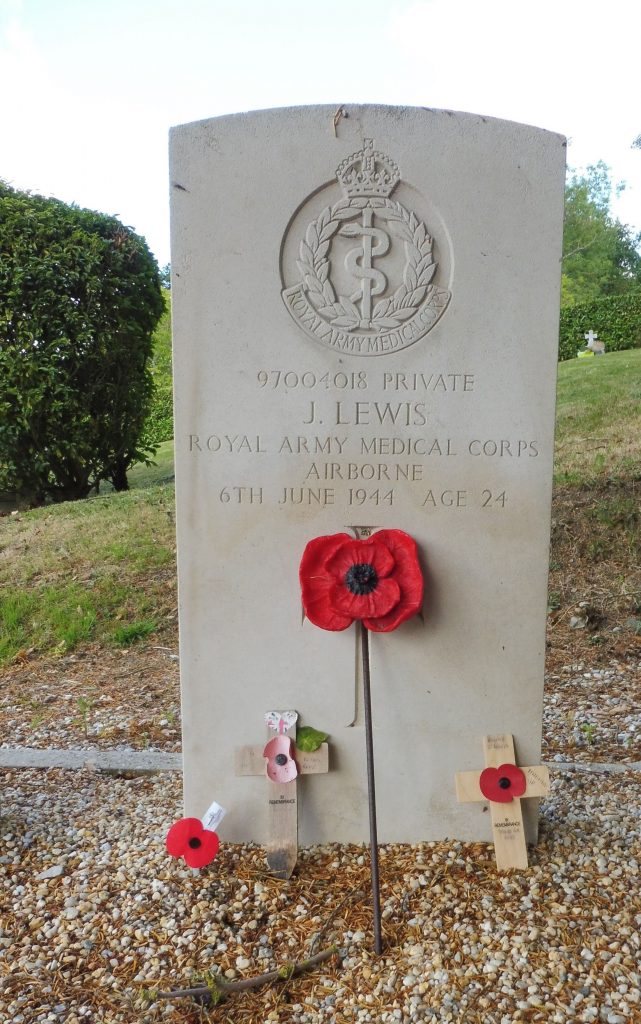
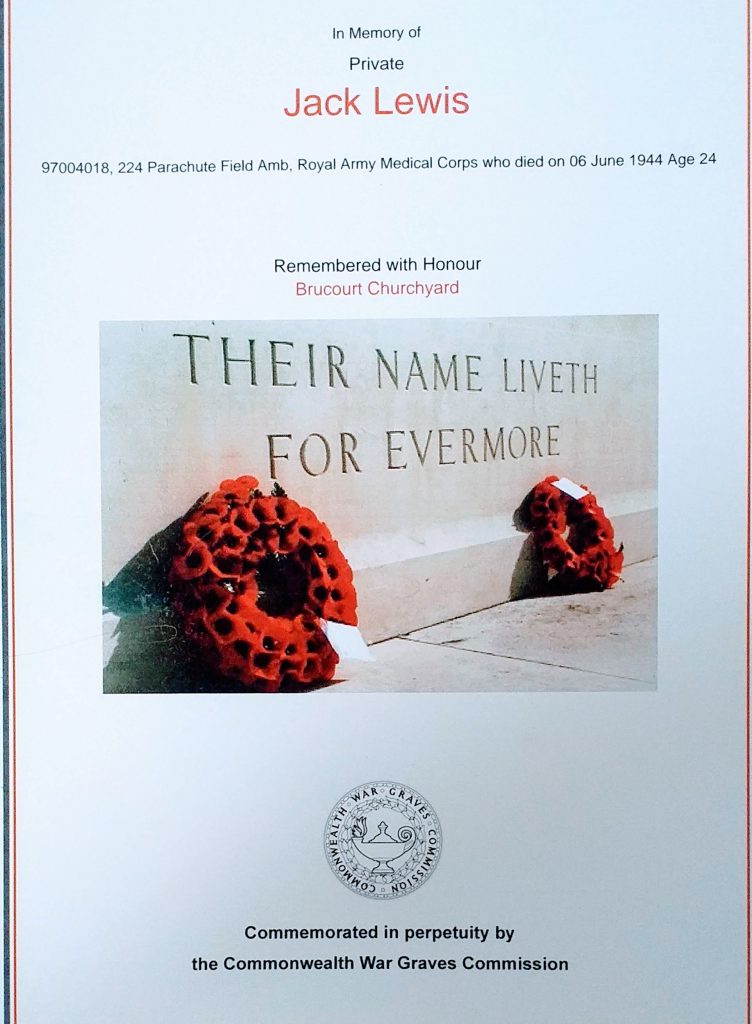
My cousin, Bill, has Jack's parachute wings. They were removed by the soldiers who were with Jack when he was wounded and were passed to Bill by his late uncle, also called Bill.
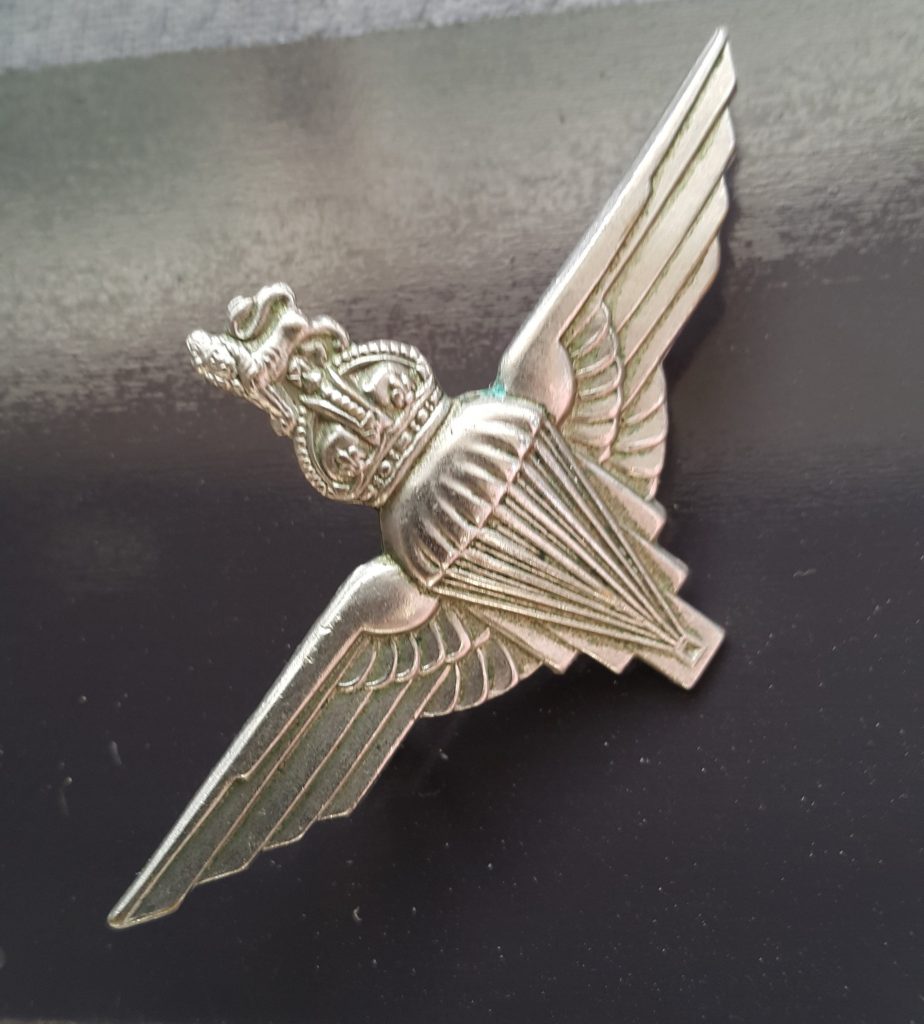
We also have a photo of Jack's unit taken by Cyril Calley.

We aren't sure if it was taken before they left for Normandy or after they returned and we can't quite tell if Jack is in the photo as there are no names on the back of it. If anyone has any information about it would be great to hear from you.
Normandy Memorial Trust - Additional Information
Men in the non-combatant corps were approached to serve in the airborne forces by senior officers in the RAMC due to the low number of RAMC personnel who had volunteered for airborne duties.
FALLEN HEROES
JACK LEWIS
Army • PRIVATE
Royal Army Medical Corps
224 Parachute Field AmbulanceDIED | 06 June 1944
AGE | 24
SERVICE NO. | 97004018
FALLEN HEROES
JACK LEWIS
Army • PRIVATE
Royal Army Medical Corps
224 Parachute Field AmbulanceDIED | 06 June 1944
AGE | 24
SERVICE NO. | 97004018




